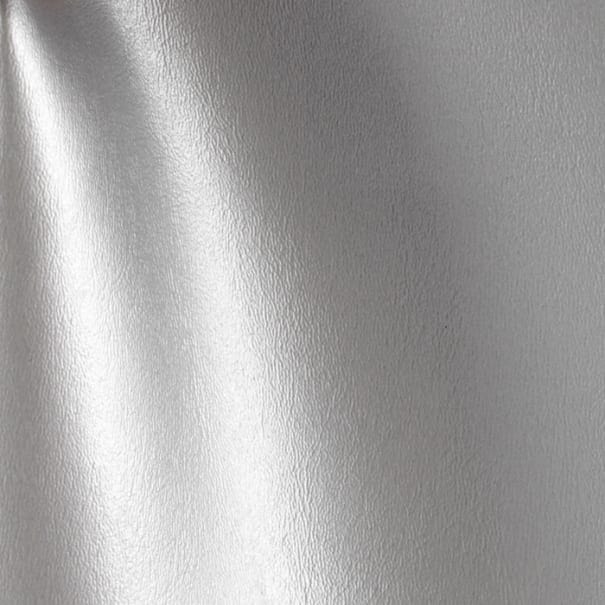How to Paint Tile To Bring a New Look
Does your tile look old and poor – the color is faded by sun, the surface is covered with scratches and chips, while the design is out-of-date and too dull to delight the eye? If you are not pleased with how your tile looks anymore, then it is time to say "Goodbye" to it! Or, maybe, to paint it? Don’t you know how to paint tile? Let us enlighten you in regard to all intricacies of the process.
Painting tile is a good choice for those people who want to change something in their current interior design without costly replacements. However, painting over tile is not that easy and fast as you can imagine just looking at beautiful Pinterest pictures. This can be a heavy and dirty work with mixed results, especially when improperly arranged and performed. So, you need to start from clear understanding of what, why and how.
Goals You Can Achieve by Wall or Floor Tile Painting
Painting over ceramic tile is an effective solution for various tasks – for complete renovation and selective improvements, for minor repairs and fancy decoration.
"Repairing" your tile
We have already mentioned the situation where painting is a less painful option compared to completed renovation. When your current tile is rather worn and you would like to change it without extra mess and spending, you can paint all the tiles and get a much better look. Also, in the framework of minor repairs you are free to paint just those tiles, which are damaged – a random tile pattern is in vogue and this improvement won’t cost you much.
Changing interior style
Your tile can be Ok, but you may need to change your furniture or other finish materials. But will the old tile blend in with new colors and textures? In this case, it will be wise to paint the tile according to your new interior project. Or, for example, when moving into a house or apartment you bought, you can just paint the existing tile to match your furniture, instead of spending a fortune on its complete replacement. To cut it short, painting tile gives you more freedom in styling.
Creating unique tile design
On the other hand, you can have sufficient funds, but still face the problem of finding some specific tile shade or pattern to comply with your project. In this case, you need only to find a desired shape and then give it any color and pattern you like. There is all the more reason for this, as nowadays there are many special tile stencils available both in DIY stores and online.
Pros and Cons of Painting Ceramic Tile
Pros:
- It is absolutely true that painting is several times cheaper than tile replacement. Even if you choose the most expensive paint and other materials for redesigning, you will still save your money.
- It is also true that you can avoid much mess, noise and upset neighbors, since removal of old tile is a nasty job. And laying new tile involves a lot of dirt, too.
- You will spend less time on painting than on tile removal, adhesive preparation, tiling, grouting and drying – this can take weeks, while painting is more time saving and can be done within a couple of days.
- If done properly, painting tile floors and walls can prolong your tile service life, since paint creates an upper protective layer. This means fewer scratches and chips on the initial tile surface.
Cons:
- It is still a messy undertaking that requires time, effort and some skills in painting, sanding, priming and repairs. Yes, you will save some money, but be ready to sweat and toil. Sure, you can skip some steps and ignore some recommendations to facilitate and speed up the process, but this will definitely affect the quality of your coating.
- When painting ceramic tile floor or wall completely, you can’t expect saving the seams and grout in their original form – the seams will be painted along with the tile surface. However, your seams scheme is unlikely to suffer, if you choose to renovate your tile with ornamenting. Besides, you can use a thin artist brush and matching/contrasting paint to cover the seams – this gives more appealing effect, but requires more time.
- Even the best paint can come off over time and typically, it is less wear-resistant and durable as compared to the initial production coating of tiles. That’s why it is not recommended to paint floor tile, since it is subject to heavy loads. If you choose to paint it anyway, make sure to use quality finish to achieve the best protection. Also, painting ceramic tile in shower and on backsplashes in bathrooms is extremely questionable, as even the most waterproof paint turns out to be not waterproof enough to ensure its durability in humid areas. However, many home owners are quite satisfied with their painting shower tile or floor tile, so the choice is yours.
Now, when you know what to expect from painting your tile, it is time to find out what tools and materials you will need.
How to Choose the Paint
This is a key question for painting porcelain tile, since paints feature different adhesion to different surfaces. The right paint spreads well, giving the surface a nice uniform look without stroke marks and downflows. It also sticks well, preventing fast peeling off and ensuring durability. So, you can’t just take any house paint for your project.
On the other hand, there are specific decorative paints on the market, designed for glass and ceramics hand painting. They feature all the required properties, but they are too costly and inconvenient for paining large surfaces.
Thus, you should choose from the following house paints:
- Oil-based paints/Alkyd enamels
- Epoxy paints
- Water-base latex or acrylic paints
- Silicone-based paints
Depending on the type, these paints can come as sprays, two-part or two-process paints. To make a grounded decision, read about the most recommended tile paints.
Also, you need to choose a primer to match your paint – acrylic-based paints usually require acrylic-based primers and so on. You can get good advice from a selling assistant in a DIY store – also ask the assistant about choosing some quality protecting top coat, matching the selected paint.
Equipment You Need for Painting
- TSP (trisodium phosphate) or other effective cleaning product to clean tile surface. When painting kitchen tile backsplash or other surfaces spotted with fat, choose one of heavy-duty degreasers.
- Metal brush, sponge, clean water and an alcohol-based agent for cleaning
- Painter’s tape and drop cloth to protect adjoining areas
- Rubber gloves and cloth mask to protect yourself
- Epoxy putty for repairs
- 220-grit sandpaper for sanding
- Paint primer to improve paint adhesion
- Quality paintbrush and low-nap paint roller for priming and painting
- Artist brush to paint the grout lines
- Interior paint
- Urethane or other type of finish for sealing
- Waste cloth for cleaning brushes and removing paint stains
How to Paint Ceramic Tile: Step by Step Guide
Step 1
Start from preparing the premise for painting. Disassemble all removable fixtures installed into the tiled surface you are going to paint (for example, if painting bathroom wall tile). Carry away all furniture pieces, if painting floor tile, and use drop cloth to cover and protect the furniture and appliances left in the premise. Also use painter’s tape to separate the work area and make sure to wear protecting rubber gloves and cloth mask.
Step 2
Get the tile surface prepared for painting. Repair small surface defects like scratches, cracks and chips, using epoxy putty, and allow it to dry. Then use sandpaper to remove the gloss layer from the tile surface in order to make it slightly rough and to improve paint adhesion. Make sure to sand both tiles and seams between them. Use a cleaning agent and a metal brush/sponge to thoroughly clean the surface and seams from any dirt and grease, since they worsen paint adhesion. Rinse the tiles with clean water and let them dry completely. Then wipe the surface with an alcohol-containing agent to remove the dust and grease residues.
Step 3
Apply primer to the surface – this is required to improve the adhesive property of paint. Use a paintbrush to coat narrow strips and small zones, while a paint roller will be more comfortable for coating large surfaces, especially when painting kitchen tile floor. An artist brush is a handy option when it comes to seams. Anyway, try to achieve uniform and complete coverage when priming. Then allow the primer dry completely according to manufacturer’ instruction – usually, it takes a few hours.
As a rule, it is recommended to coat tiles with primer twice for better sticking. When painting bathroom tile, you can even use putty again after priming to make the surface more even and sticky. In this case, you should sand the surface after filling with putty and coat it with the primer once more. But if your tile features porous texture, you can skip the second priming and puttying.
Step 4
When the primer coat is dry, it’s time to apply your paint. Don’t forget to stir it before using. When painting, try to distribute the coat evenly over the entire surface and pay special attention to corners and other tricky spaces.
Usually, paint is applied in several layers, and the smoother the surface of your tile, the more layers it will require (up to 3-4). Let each layer dry thoroughly before the next coating. As a rule, it takes about 6-12 hours depending on the paint used, but the first layer needs more time for drying.
Step 5
At the end of the process, seal the coat with a chosen finish to protect it from wearing and enhance its durability. Keep in mind that it can take several days for the finish to dry completely. Now you know how to paint tile, but you will get a better idea of the process upon watching a couple of videos, covering all the details. For example, learn from this video, showing painting bathroom tile before and after – we hope it will settle all your doubts.


























